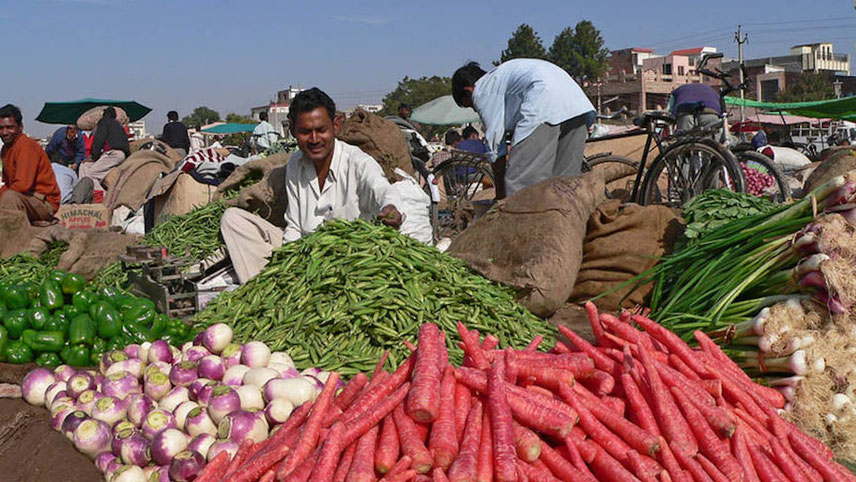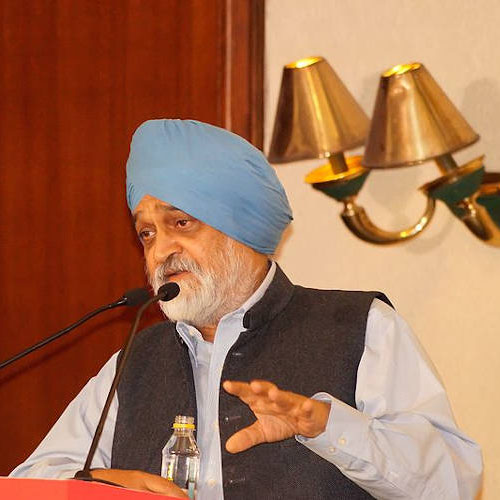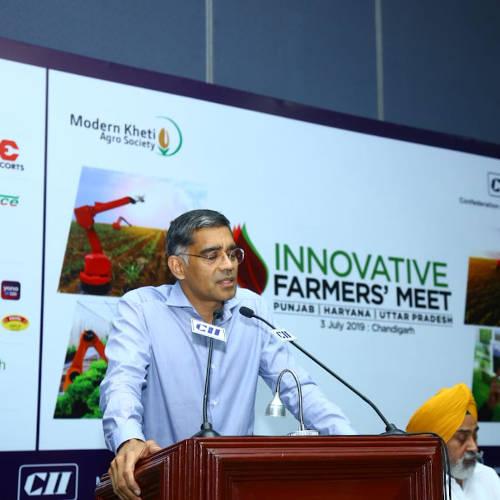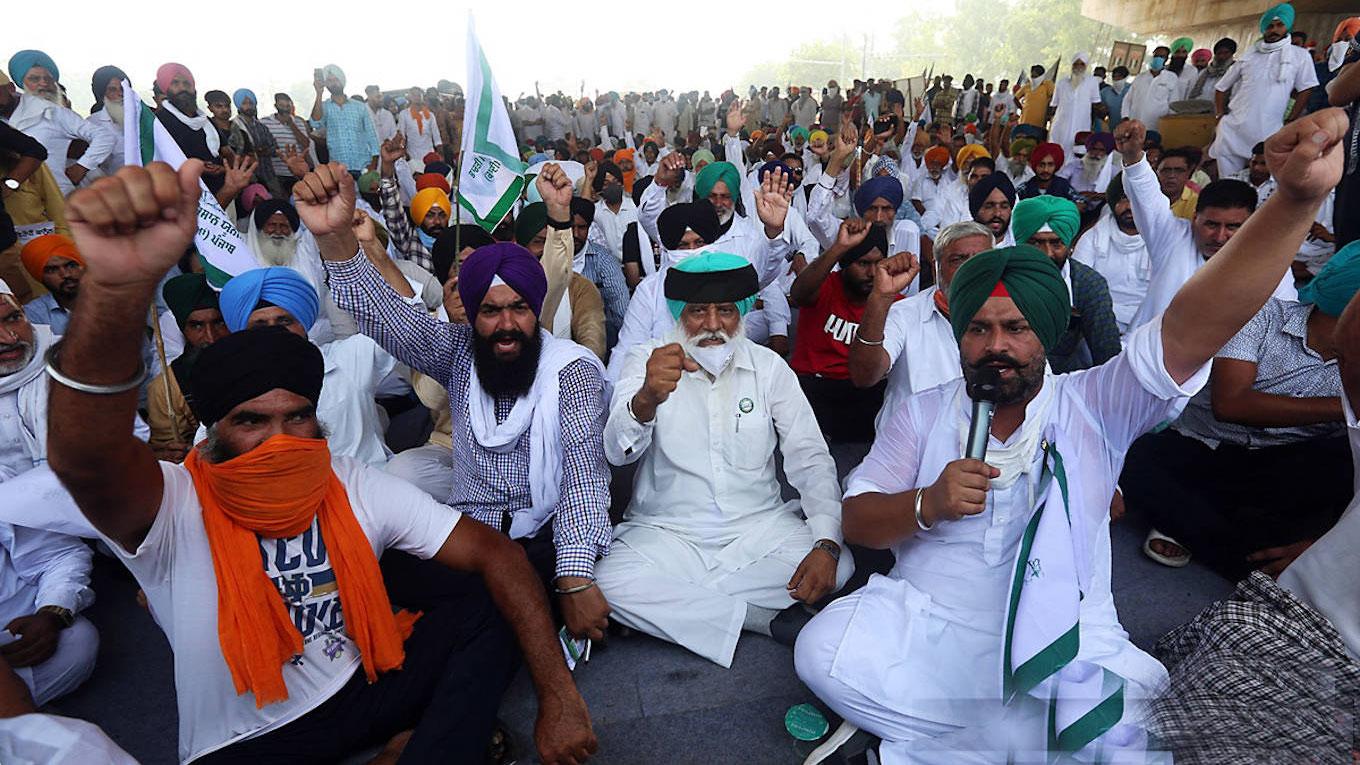-

Mandis have informal dispute resolution mechanisms and there is little risk of payment defaults
Modi and his team could have turned to any farm expert from Punjab before crafting their strategy. Indeed, if the government was serious about farm reforms, it should have made efforts to wean away the farmers of Punjab and Haryana from wheat and rice cultivation to other crops by offering inducements long before the present raft of reforms was rolled out. Without that, the reforms had no chance.
The reason is simple. In 2018-19, as many as 73 per cent of wheat production in Punjab was procured at the minimum support price through regulated mandis. It was 80 per cent in Haryana, a state ruled by the BJP for two consecutive terms now. The farmers of Punjab and Haryana also produce rice, mainly for consumption in other states. In the three years between 2016-17 and 2018-19, about 89 per cent and 85 per cent respectively of Punjab and Haryana’s non-basmati rice output was procured for consumption, when compared to the 51 per cent in Andhra Pradesh and 11 per cent in West Bengal, which are usually the major rice-consuming states.
The reasons Punjab’s farmers have developed a vested interest in the existing system, despite its well-publicised flaws, is that almost 900,000 Punjab farmers have been supplying wheat for the public distribution system (PDS) during each of the past four years at minimum support prices (MSP). They account for more than 80 per cent of the state’s wheat growers even though their share is only 3 per cent nationally. In Haryana, 900,000 farmers sold wheat at the MSP to the Central government last year - up from 470,000 farmers in 2016-17.
Agriculture experts from Punjab say it was not the fault of the farmers but of the authorities, who announced MSP only for two crops, which they procured in large quantities. “Why blame the farmers for growing two crops only?” asks Varinderpal Singh of Punjab Agricultural University, Ludhiana. “Punjab's farmers are growing more wheat and paddy because MSP is only available for two crops. The government is compelling them to grow only two crops. They should cover more crops under MSP. Punjab farmers will then grow other crops and perhaps also increase their income”.
System to blame?
One can blame this fixation on wheat and rice cultivation on the prevailing system, wherein the Centre procures more grain than is required for distribution to the poor through ration shops and holds excess stocks. As procurement operations are extended to other states now and more of their farmers are covered, Punjab and Haryana farmers fear that they will be squeezed out. In Uttar Pradesh, which is the largest producer of wheat, the number of farmers covered by procurement operations has increased 4.5 times from 166,000 to 750,000 over the last four years. In Rajasthan, the number has increased by 2.5 times to 100,000 farmers. The Commission on Agricultural Costs and Prices (CACP), which fixes MSPs, wants to end the open procurement policy, but nobody is listening.
-
Punjab is the powerhouse of this agitation against farm laws. They started the aandolan in a peaceful manner and reached Delhi borders, which gave strength to crores of farmers
Voicing the fears of the farmers about the new laws, Ajay Jakhar, chairman, Punjab’s Farmers’ & Farm Workers’ Commission, says the Food Corporation of India may put a cap on the amount of grain it procures from individual farmers in the state, once private players come in. Instead of buying whatever is offered, it might limit the quantity to the average output of maybe 5 acres.
Offtake vs procurement
In 2019-20, the offtake of wheat in the country was 27.22 million tonnes, while procurement was 34.13 million tonnes. The procurement of rice was 46.33 million tonnes in 2019-20, while the offtake was 34.9 million tonnes. Thus, the government procured much more than what was required – 6.92 million tonnes of wheat and 1.14 million tonnes of rice. This has been the trend in recent years. During the pandemic, the government made good use of excess stock, by making additional allocations, until November 2020, under Pradhan Mantri Garib Kalyan Yojana and also for migrants.
In 2020-21, the government will again have to grapple with excess stock of wheat and rice. Then there is also the issue of storage. At its peak (about 82 million tonnes), the existing storage capacity is only about 62 million tonnes. The tendency to hoard food stocks stems from the fear of shortages, something unheard of in an era of global agri-trade linkages.
Weaning the farmers of Punjab away from rice makes sense in other contexts as well. For one, it would have helped restore Punjab’s water table, which is going down perilously. About 80 per cent of the geographical area in Punjab is over-utilised for water and the water table declined by 70 cm per year from 2008 to 2012. With one kg of rice consuming 3,000-5,000 litres of groundwater, Punjab has no option but to reduce the area under paddy.
The State Farmers Commission under Ajay Jakhar had also noted in its report of 2018 that, 110 out of 148 blocks are over-exploited for groundwater and a shift from existing cropping pattern is necessary ‘so that the next generation has adequate natural resources for its use’. A task force set up by the state government on the directions of NITI Aayog (2016-17) also noted that, if the area under paddy is not diverted, the productivity levels will fall back to that of the 1960s.
In fact, Trilochan Mohapatra, DG, Indian Council of Agricultural Research, says rice procurement must be based on the amount of groundwater required to cultivate it. This is less in the wet states of eastern India. Punjab and Haryana will be discouraged from depleting their groundwater to grow it. Rice procurement must shift to the eastern states, which are climatically suited for its cultivation. This will also alleviate poverty in a region that is steeped in it.
-

Ahluwalia: preparing a strategy for Punjab’s revival
Montek’s formula
During the nationwide Covid-19 lockdown, the Amrinder Singh government appointed a committee headed by Montek Singh Ahluwalia, the preeminent economist of the UPA era, to prepare a strategy for the state’s economic revival. A major recommendation of the group relates to free electricity and its impact on paddy cultivation. It says that Punjab should strive to reduce the area under paddy by about 1 million hectares, out of 3.1 million hectares. This is proposed to be achieved over the next seven years by diversification from paddy to less water-guzzling crops. The committee has suggested several measures including separation of electricity feeder lines, Direct Seeded Rice and drip irrigation in paddy.
Another recommendation is to double the area under high-value fruits like plums, peaches, litchi, guava and vegetables like potatoes, peas and chilli etc. Vegetable cultivation is much more labour intensive than food grains and can generate more farm jobs. But the fact that farmers do not have any assurance of MSP acts as a disincentive.
Siraj Hussain, former Union agriculture secretary, points out that frequent fluctuations in prices of perishables also affect their income and discourages farmers from taking to fruit farming. For instance, Amritsar and Malerkotla are important centres of vegetable production in Punjab. The Montek-led group has recommended airfreight subsidy for export from these centres in Punjab, but the state government is not in a position to bear this. This is where the Centre could also have stepped in for a short period.
Exports would have been a way out but, with India’s relations with Pakistan remaining tense, the farmers of perishables cannot access markets in Central Asia. Indeed, the farmers (as well as businessmen) of Punjab would be the biggest beneficiary of better India-Pakistan trade relations.
Revenue loss
States fear revenue loss from the central legislations. The mandi levies and fees add up to 8.5 per cent in Punjab, 6.50 per cent in Haryana, 4.05 per cent in Uttar Pradesh, 3.75 per cent in Madhya Pradesh and 3.15 per cent in Rajasthan. During 2018, the imposts were higher: 14.50 per cent in Punjab, 11.50 per cent in Haryana, 8.86 per cent in MP, 8.16 per cent in UP, and 3.25 per cent in Rajasthan. So far, Punjab has been vocal on the revenue losses.
The Punjab government maintains that the revenue earned from the mandis has been invested in rural roads and marketing infrastructure. Punjab has a network of 153 principal yards, 284 sub-yards and 1,443 purchase centres. These would wither away if trade moves out of the mandis. However, that might not happen. Competition might persuade the mandis to shed bad practices like price-fixing and reduce their charges. There is much going for them. The southern and western states are less dependent on regulated markets.
-

Jakhar: change the cropping pattern
Despite the central legislations allowing organised retailers or food processers to buy directly from farmers, aggregating the produce from hundreds of small farmers, transporting, and storing it is not an easy task. Private market yards will take time to be set up. Their services might not come cheap.
Change will take time. It also needs time and an understanding of the issues at stake. “Since Punjab and Haryana have provided food security to India for over 40 years, their contribution should be respectfully acknowledged,” Siraj Hussain points out. “A genuine respect for federalism should have persuaded the Centre to enter into a dialogue with the original green revolution states and work out a concrete road map, including for gradual diversification from paddy to more sustainable crops. An essential component of this road map may well be a graded direct income support to farmers in the original green revolution states.”
Clearly, the government’s penchant for drama and sudden decision-making could have been avoided in an area as politically sensitive as agriculture. In 2015, the Modi government had to effect a major climb-down on reforms meant to facilitate land acquisition. This followed sustained political pressure. It ended up by dropping most of its contentious amendments to the Land Acquisition Act of 2013 and bringing back the crucial clauses introduced by the previous UPA government on consent of affected families and social impact assessment. Clearly, the Modi government would like to avoid a replay of similar embarrassment. But how will it bell the Punjab farmer?





































